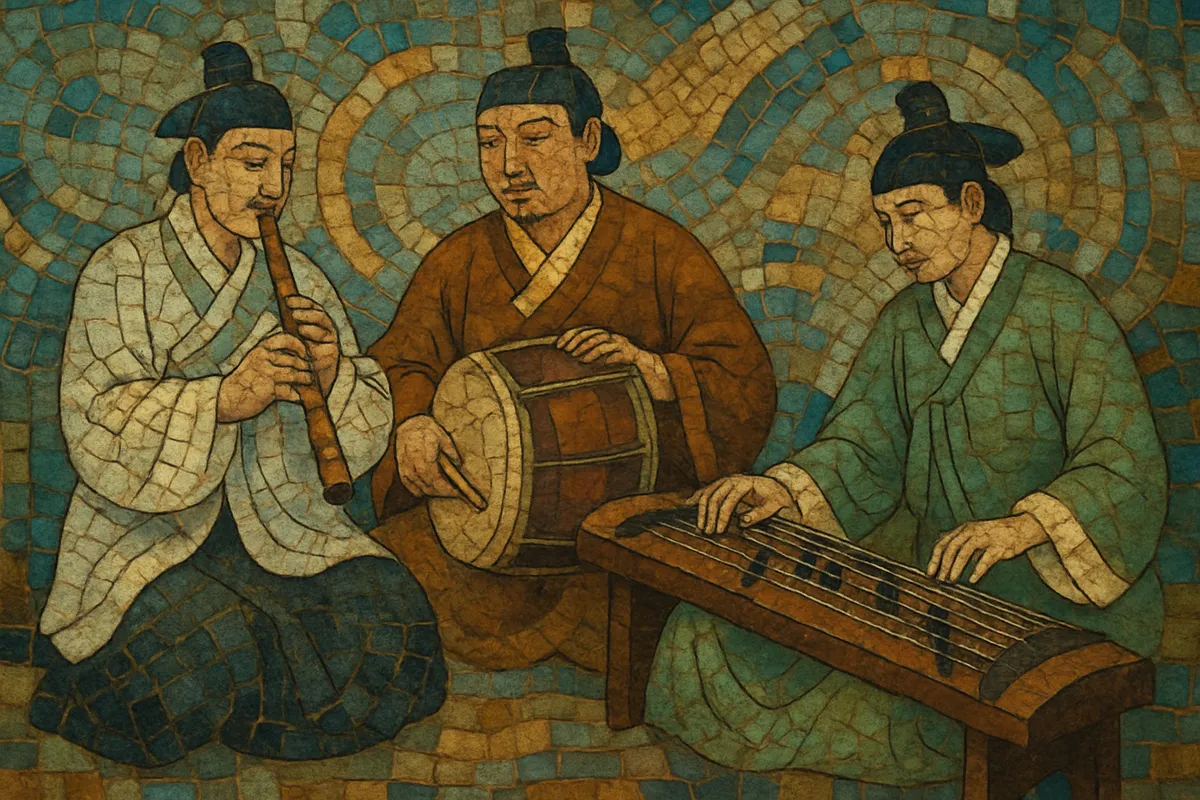Dangak is one of the three principal repertories of Korean court music, alongside aak (Confucian ritual music of Chinese origin) and hyangak (native Korean court music). The term literally means "Tang music," reflecting its historical roots in Chinese Tang- and Song‑dynasty banquet and ceremonial music that were adopted and localized at the Korean court.
Defined by stately tempi, cyclic rhythmic patterns (jangdan), and elegant heterophonic textures, dangak supports refined court dances (dangak jeongjae) as well as seated instrumental performance. Its tonal language favors pentatonic frameworks, long-breathed melodic arches, and measured ornamentation rather than virtuosic display. Core pieces that survive in the modern repertory include Nakyangchun (Spring in Luoyang) and Boheoja (Pacing the Void), emblematic of the genre’s graceful pacing and balanced ensemble blend.
Typical instrumentation combines double reeds (piri), transverse bamboo flute (daegeum), two‑string fiddle (haegeum), plucked zithers (gayageum, geomungo), bowed zither (ajaeng), and a small battery of time‑keeping percussion (janggu, buk, bak, jing).
Dangak emerged on the Korean peninsula through sustained cultural exchange with China, particularly during the Goryeo dynasty (918–1392). Music and dance pieces from the Tang and Song courts were imported, adapted to local tastes, and integrated into courtly entertainment and ceremony. While aak codified Confucian ritual repertories, dangak represented a secular-ceremonial stream used for banquets and court festivities, often paired with elegant court dances (jeongjae).
Under the Joseon dynasty (1392–1897), the court organized music under dedicated bureaus (notably the Jangakwon) and consolidated repertories. Treatises such as the Akhakgwebeom (1493) described instruments, performance practice, and ensemble formation, helping standardize dangak within the broader jeongak (refined music) tradition. Characteristic pieces like Nakyangchun and Boheoja were maintained, and the ensemble balance—winds, strings, and measured percussion—was carefully curated to support dignified court dance.
Dangak emphasizes heterophony: multiple instruments render the same melody with subtle rhythmic and ornamental offsets, creating a shimmering composite line. Tempi are generally slow to moderate, allowing court dance choreography to unfold with poise. Jangdan cycles structure the flow, while modal organization draws on pentatonic pitch collections and stable final tones to sustain serenity and grandeur.
With the fall of the monarchy in the early 20th century, court performance dwindled, but post‑war cultural preservation revived the tradition. The National Gugak Center and regional orchestras systematized teaching, reconstruction, and staged presentation of dangak and associated jeongjae. Today, the repertory is performed in concerts, educational programs, and state ceremonies, and it informs contemporary creative works (changjak gugak) and fusion projects that reinterpret court idioms for modern audiences.


